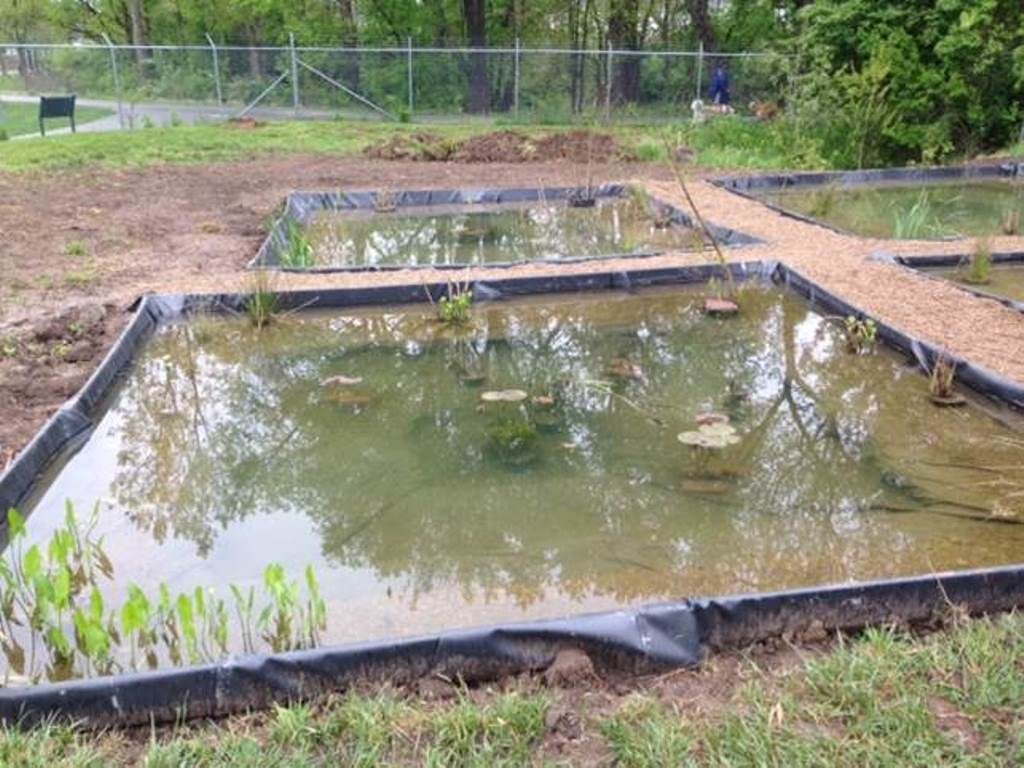Background and Rationale
Native Ohio fishes adapted to clear, shallow, vegetated waters of wetlands, glacial lakes, low gradient streams, and the lacustuaries of Lake Erie (wetland fishes) are highly imperiled in Ohio. Approximately 90% of Ohio’s original wetlands have been destroyed since European settlement. Destruction and impairment of aquatic habitats with clear water and abundant vegetation have contributed to the extirpation of three wetland fish species (Pugnose Shiner (Notropis anogenus), Blacknose Shiner (N. heterolepis), and Blackchin Shiner (N. heterodon)) from Ohio and a reduction in the populations of several others. In addition, the presence of the non-native Common Carp (Cyprinus carpio) has further impaired shallow water habitat because of their disruptive feeding behavior that uproots vegetation and stirs up sediment. The isolated nature of many of these habitats limits or perhaps even precludes natural recolonization (if and when habitat conditions recover). To date, conservation activities targeting wetland fishes are largely absent. As a result, ten species of wetland fishes are extirpated (extinct from Ohio), endangered, threatened, or species of concern. We believe that conserving and recovering this component of Ohio’s natural heritage is important and achievable. The overarching goal of this effort is to restore these species and their habitats to the point where these species can be removed from Ohio’s list of threatened, endangered, or species of concern.
Learn more here
The following ten species were selected for inclusion in this effort because they are classified as extirpated, endangered, threatened, or species of concern in Ohio. These species are dependent on shallow, clear, vegetated aquatic habitat:
Our role in conservation:
In the spring of 2016, with support from the US Fish and Wildlife Service and the Ohio Division of Wildlife’s Ohio Biodiversity Conservation Partnership, we began working to restore populations of these fishes in Ohio. In order to achieve this, six outdoor rubber-lined rearing ponds were constructed at the Olentangy River Wetlands Research Park. Parent populations of wetland fish are obtained either from Ohio or from neighboring states with the help of appropriate state agencies including the Indiana Department of Natural Resources and the Pennsylvania Fish and Boat Commission. These fish are then separated into rearing ponds and left to reproduce with little human intervention. After the fry have time to grow to a less vulnerable size, they are collected and released at appropriate sites. The following criteria are used to establish sites:
- Release sites need to be within a species’ natural distribution
- Habitat needs to resemble what would be considered favorable
- Release sites need to be small so they can be easily monitored
- Locations need to have the potential to be used for outreach
- Landowners must be willing to have a listed species released on their property.
Information pertaining to fish community and water quality is obtained before and after release at each site to help us: 1) determine the effects of reintroduction on food web dynamics and 2) determine favorable environmental conditions for the persistence of stable populations of these wetland fish. After the fish are removed and released, the rearing ponds are cleaned, refilled, and then stocked with new parent populations. If possible, these fish are obtained from localities different from those that have already been used. This reduces the loss of genetic variation (founder effect) that would occur if we only used one population for reintroduction efforts.
Our efforts so far:
To date, three successful breeding seasons have yielded over 3000 individuals, including Iowa Darters (Etheostoma exile), Lake Chubsuckers (Erimyzon succetta), and Blacknose Shiners (Notropis heterolepis). These fish were released at a variety of locations including wetland ponds at Battelle Darby Creek Metro Park and Scioto Grove Metro Park, Big Darby Headwaters Nature Preserve, and Round Lake near Lakeville, OH. Several of these sites have shown exceptional recruitment of our released species, especially Iowa Darters.
Looking forward:
Because of our aforementioned success with Iowa Darter rearing, we have chosen not to continue raising them during the 2019 breeding season and instead focus our resources on other species. We may use Iowa Darters from our release sites as source populations for future reintroduction events. This year, the wetland rearing ponds contain Blacknose Shiners (Notropis heterolepis), Lake Chubsuckers (Erimyzon sucetta), Pugnose Minnows (Opsopoedus emiliae emiliae), Blackchin Shiners (Notropis heterodon), Pirate Perch (Aphredoderus sayanus), and Western Banded Killifish (Fundulus diaphanus monona). This year will be the first time that we have attempted to raise the latter three species. It is our intent that many of the fish raised in 2019 will be reintroduce in the Portage Lakes region collaborating with Summit County Metro Parks. In addition, we are currently in the process of building a seventh, larger rubber lined rearing pond. This pond will be used to propagate Spotted Gar (Lepisosteus oculatus), which will then be released in Ashtabula Harbor in Lake Erie. Although populations of Spotted Gar still exist in Lake Erie, they are extremely rare in Ohio. However, a substantial population still exists in Presque Isle Bay of Lake Erie near Erie Pennsylvania. With the help of the Pennsylvania Fish and Boat Commission, we hope to obtain a small number of adults to use for spawning efforts.












